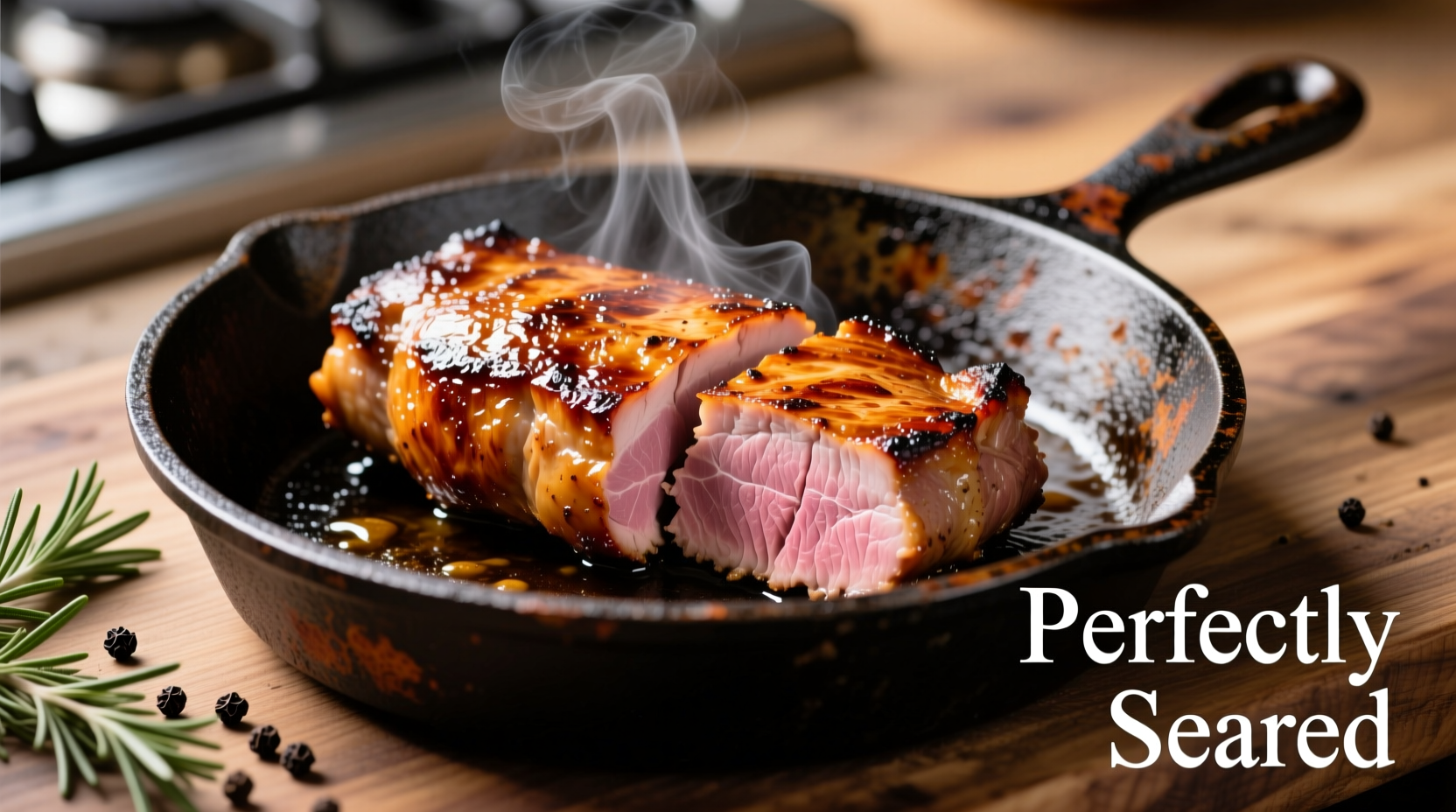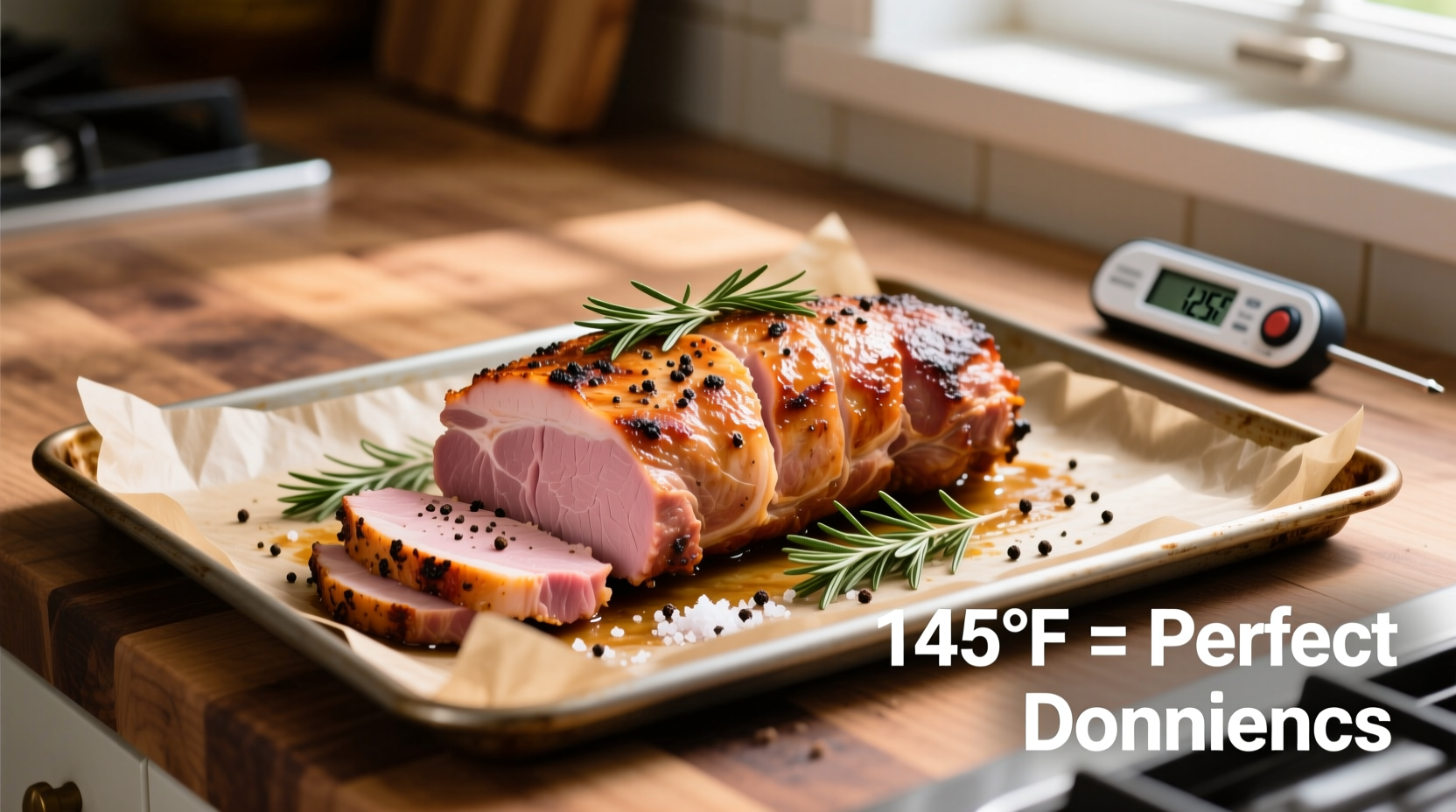Perfectly cooked pork tenderloin takes 20-25 minutes at 400°F (204°C) for a standard 1-1.5 lb cut, reaching 145°F internal temperature with 5 minutes resting time. This precise timing ensures juicy, tender results every time without overcooking.
Nothing beats a perfectly cooked pork tenderloin—tender, juicy, and full of flavor. But getting that ideal result requires more than just guessing cooking times. As a culinary professional who's taught thousands of home cooks, I've seen how a few precise measurements make all the difference between dry, tough meat and restaurant-quality perfection.
Why Time Alone Isn't Enough: The Temperature Factor
While "how long to cook" is the common question, professional chefs focus on internal temperature, not just time. The USDA Food Safety and Inspection Service confirms that pork is safe to eat at 145°F (63°C) with a 3-minute rest period, which allows juices to redistribute throughout the meat.
Time varies significantly based on:
- Your oven's actual temperature (use an oven thermometer for accuracy)
- The starting temperature of your meat (chilled vs. room temperature)
- Exact thickness of your tenderloin
- Whether you sear first (recommended for better flavor)
| Oven Temperature | Cooking Time (1-1.5 lb) | Internal Temp Target |
|---|---|---|
| 375°F (190°C) | 25-30 minutes | 140°F (remove from oven) |
| 400°F (204°C) | 20-25 minutes | 140°F (remove from oven) |
| 425°F (218°C) | 18-22 minutes | 140°F (remove from oven) |
Note: Always remove pork from oven at 140°F—it will continue cooking to 145°F during resting.
Step-by-Step Perfect Pork Tenderloin Method
Preparation (5 minutes)
Proper preparation sets the stage for success:
- Pat the tenderloin completely dry with paper towels
- Trim any excess silver skin (this tough membrane won't tenderize during cooking)
- Season generously with salt, pepper, and your choice of herbs 30-60 minutes before cooking
- For best results, bring meat to room temperature (about 30 minutes out of fridge)
Searing for Flavor (Optional but Recommended)
"Searing creates the Maillard reaction that develops complex flavors," explains culinary science expert Harold McGee in On Food and Cooking. Heat 1 tablespoon oil in an oven-safe skillet over medium-high heat until shimmering. Sear all sides for 1-2 minutes until golden brown before transferring to oven.

Oven Cooking Process
Follow these critical steps for perfect results:
- Preheat oven to your chosen temperature (400°F recommended for most home ovens)
- Place seared tenderloin (or raw if not searing) on a rack in a roasting pan or in an oven-safe skillet
- Insert an oven-safe meat thermometer into the thickest part
- Cook until thermometer reads 140°F (about 20-25 minutes at 400°F)
- Never open the oven during the first 15 minutes of cooking
The Critical Resting Period
This step makes or breaks your results. When you remove pork from the oven at 140°F, tent loosely with foil and let rest for 5-10 minutes. During this time:
- Internal temperature rises to safe 145°F
- Proteins relax, allowing juices to redistribute
- Meat becomes significantly more tender
Cutting too soon releases precious juices onto your cutting board rather than staying in the meat.
Troubleshooting Common Problems
Dry or Tough Pork
This almost always means overcooking. Pork tenderloin has minimal fat, so exceeding 145°F causes rapid moisture loss. Solution: Use a reliable meat thermometer and remove at 140°F.
Uneven Cooking
If one end cooks faster than the other, your oven may have hot spots. Rotate the pan halfway through cooking or choose a more consistent oven temperature like 375°F for more even results.
Undercooked Center
If your thermometer shows under 140°F at the expected time, check your oven temperature with a separate oven thermometer. Many home ovens run cooler than indicated.
Pro Tips for Restaurant-Quality Results
- Temperature matters more than time: A $15 instant-read thermometer pays for itself in perfect meals
- Try reverse searing: For thicker cuts, cook at 275°F until 130°F internal, then sear for 2 minutes per side
- Marinate wisely: Acidic marinades (like citrus or vinegar) should only be used for 2-4 hours to avoid texture changes
- Herb pairing: Rosemary, thyme, and garlic create classic flavor profiles that complement pork's natural sweetness
- Slicing technique: Cut against the grain at 1/2-inch thickness for maximum tenderness
How Oven Type Affects Cooking Time
Not all ovens perform equally. Convection ovens circulate hot air, cooking food about 25% faster than conventional ovens. If using convection:
- Reduce temperature by 25°F
- Check for doneness 5 minutes earlier than standard times
- Position meat in the center of the oven for even air circulation
Gas ovens often have more moisture than electric, which can slightly extend cooking times. Always rely on internal temperature rather than time alone for perfect results.
Food Safety First: Understanding Pork Doneness
Gone are the days when pork needed to be cooked until well-done. According to the USDA's Food Safety and Inspection Service, pork is safe at 145°F with a 3-minute rest. This temperature kills harmful bacteria while preserving moisture and flavor.
The color of cooked pork isn't a reliable indicator of doneness. Slightly pink centers are perfectly safe and often indicate ideal cooking. The National Pork Board confirms: "The ideal doneness for pork tenderloin is 145°F, which may leave some pork looking pink, but that's perfectly normal and safe."
Serving Suggestions for Perfect Meals
Pair your perfectly cooked tenderloin with complementary sides:
- Apple cider pan sauce (deglaze the skillet with 1/2 cup apple cider, 1/4 cup broth, and 1 tbsp butter)
- Roasted root vegetables (carrots, parsnips, sweet potatoes)
- Creamy polenta or mashed potatoes
- Simple green salad with vinaigrette
Leftover pork tenderloin makes excellent sandwiches, salads, or tacos the next day. Store in an airtight container for up to 3-4 days.
How long to cook 2 lb pork tenderloin in oven?
A 2 lb pork tenderloin needs about 25-30 minutes at 400°F. Always check internal temperature rather than relying solely on time—remove at 140°F and let rest to reach the safe 145°F final temperature.
Should I cover pork tenderloin when cooking in oven?
No, pork tenderloin should not be covered during oven cooking. Covering creates steam that prevents proper browning. Only tent loosely with foil during the resting period after cooking.
Can I cook frozen pork tenderloin in the oven?
Yes, but add 50% more cooking time and check temperature frequently. For best results, thaw pork tenderloin in the refrigerator for 24 hours before cooking to ensure even cooking and optimal texture.
Why is my pork tenderloin tough after cooking?
Tough pork tenderloin usually results from overcooking or skipping the resting period. Remove at 140°F and rest for 5-10 minutes. Also ensure you're slicing against the grain at 1/2-inch thickness for maximum tenderness.
What temperature is pork tenderloin done in Celsius?
Pork tenderloin is done at 63°C (145°F). Remove from oven at 60°C (140°F) and let rest—the temperature will continue rising to the safe 63°C during resting.











 浙公网安备
33010002000092号
浙公网安备
33010002000092号 浙B2-20120091-4
浙B2-20120091-4